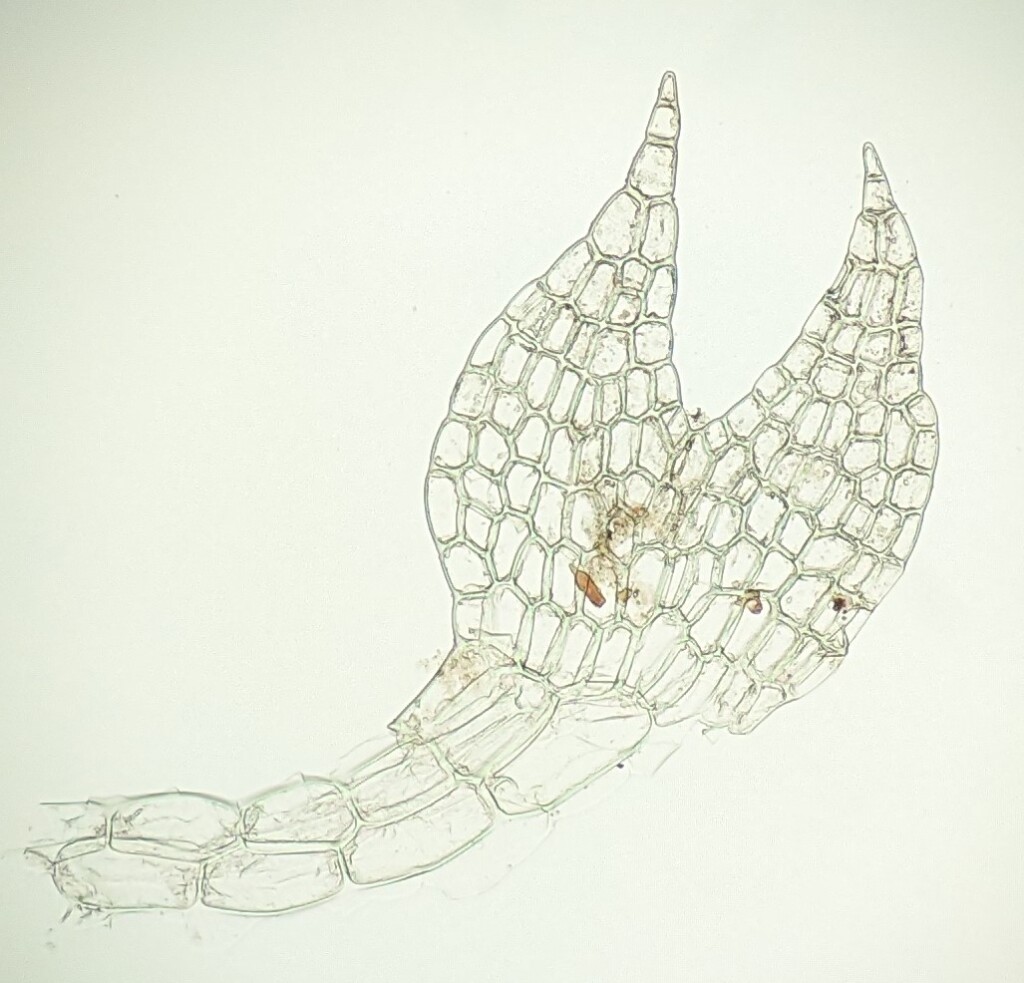Cephaloziaceae
Terrestrial, lithophytic (not in Victoria) or rarely epiphytic (not in Victoria), dioicous, autoicous (not in Victoria), paroicous (not in Victoria) or synoicous (not in Victoria). Asexual reproduction rarely by single-celled gemmae at apices of erect shoot apices (not in Victoria). Stems creeping or procumbent, irregularly and sparingly branched, rarely differentiated into stems with normal leaves and those with reduced leaves (not in Victoria), with two ranks of lateral leaves or rarely with sporadic underleaves, rarely greatly broadened to be a similar width to the lobe-like leaves and with a subthallose form (not in Victoria); branches emerging from main stems abaxial to unlobed or narrower lateral leaf and without a collar of tissue at base or (not in Victoria) emerging from near unmodified lateral leaves or from abaxial stem and with a collar of tissue at base. Lateral leaves orbicular, quadrate or oblong to ovate or lanceolate (not in Victoria) in outline, bifid or bilobed, unlobed (not in Victoria) or 3–4-lobed (not in Victoria), symmetric or asymmetric (not in Victoria), transverse to succubous, alternate, spreading and directed toward apex of stem, remote to imbricate, entire or (not in Victoria) crenulate to ciliate, flat (not in Victoria) to concave adaxially, rarely conspicuously undulate (not in Victoria), sometimes the abaxial margin infolded to form a water-sac (not in Victoria), unistratose or rarely 2–4-stratose near base (not in Victoria); lobes triangular, acute, acuminate to filiform at apex. Underleaves mostly absent, rarely ovate to lanceolate and unlobed or small and bifid (not in Victoria), remote to imbricate (not in Victoria), entire. Leaf cells polygonal, quadrate to oblong, smooth or rarely striolate (not in Victoria), weakly chlorophyllose, thin- or (not in Victoria) evenly thick-walled, without trigones or with distinct concave sided to bulging trigones (not in Victoria), without oil bodies or with 1–10 oil bodies (not in Victoria); oil bodies ovoid to ellipsoid, finely granular. Rhizoids scattered along abaxial stem, rarely produced in fascicles from leaves (not in Victoria), hyaline. Androecia eventually intercalary, with 2–20 pairs of leaf-like or ventricose bracts, each with 1–2 antheridia. Sporophytes terminating main axes or branches (not in Victoria), developing within a perianth; perianth cylindric, trigonous toward apex, with a crenulate to ciliate or laciniate (not in Victoria) mouth; capsule ovoid (not in Victoria) to ellipsoid, bistratose, rarely tristatose (not in Victoria), dehiscing by 4 valves; elaters bispiral; spores globose, verrucose to granulate or areolate (not in Victoria).
Cosmopolitan, with ten genera and 89 species (Feldberg et al. 2016; Söderström et al. 2016); one genus and species, Cephalozia drucei (R.M.Schust.) Váňa, in Victoria.
Feldberg, K., Váňa, J., Krusche, J., Kretschmann, J., Patzak, S.D.F., Pérez-Escobar, O.A., Rudolf, N.R., Seefelder, N., Schäfer-Verwimp, A., Long, D.G., Schneider, H. & Heinrichs, J. (2016). A phylogeny of Cephaloziaceae (Jungermanniopsida) based on nuclear and chloroplast DNA markers. Organisms, Diversity & Evolution http://doi10.1007/s13127-016-0284-4.
Söderström, L., Hagborg, A., von Konrat, M., Bartholomew-Began, S., Bell, D., Briscoe, L., Brown, E., Cargill, D.C., Costa, D.P., Crandall-Stotler, B.J., Cooper, E.D., Dauphin, G., Engel, J.J., Feldberg, K., Glenny, D., Gradstein, S.R., He, X., Heinrichs, J., Hentschel, J., Ilkiu-Borges, A.L., Katagiri, T., Konstantinova, N.A., Larraín, J., Long, D.G., Nebel, M., Pócs, T., Puche, F., Reiner-Drehwald, E., Renner, M.A.M., Sass-Gyarmati, A., Schäfer-Verwimp, A., Moragues, J.S., Stotler, R.E., Sukkharak, P., Thiers, B.M., Uribe, J., Váňa, J., Villarreal, J.C., Wigginton, M., Zhang, L. & Zhu, R. (2016). World checklist of hornworts and liverworts. Phytokeys 59: 1–828.
 Spinning
Spinning